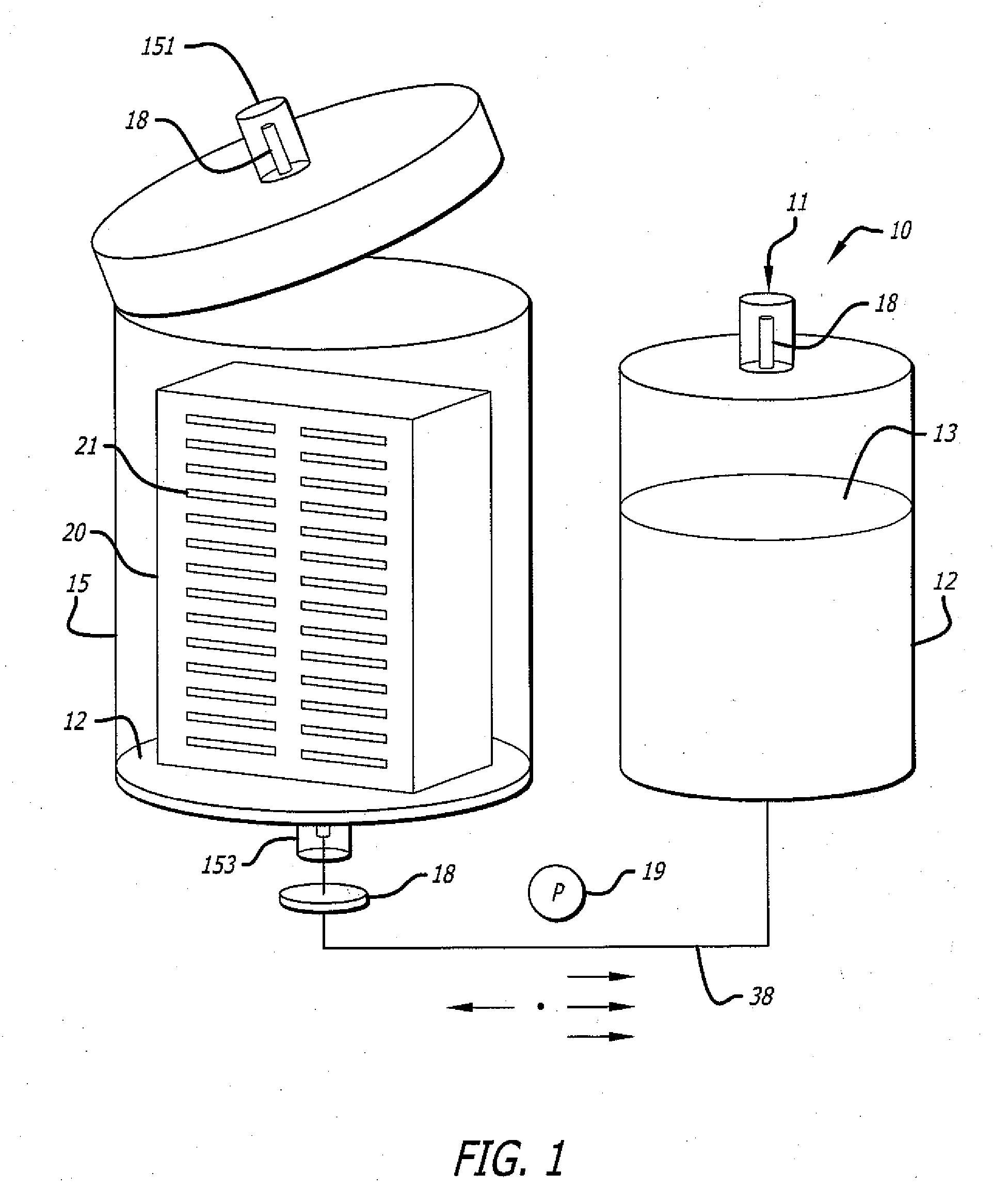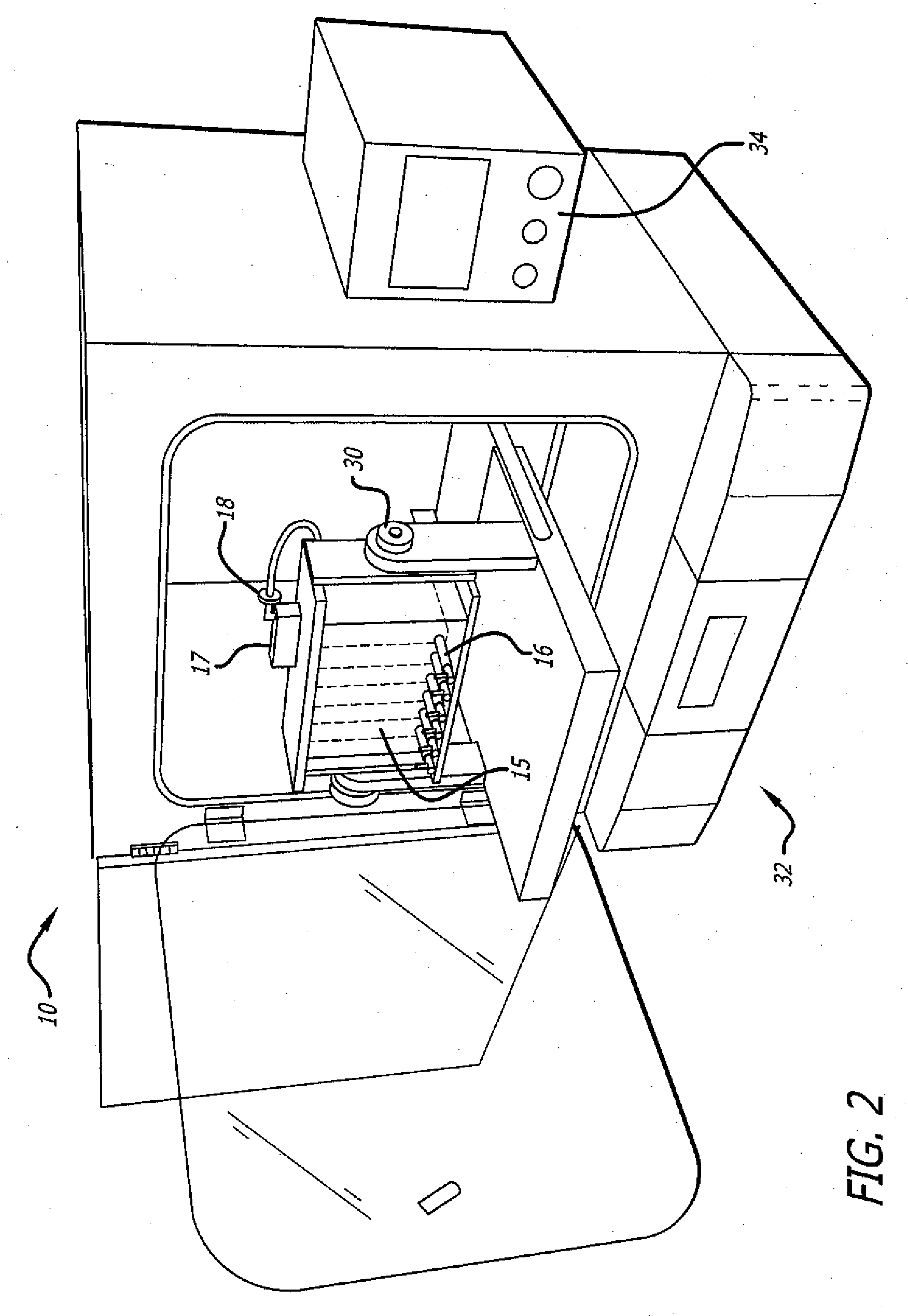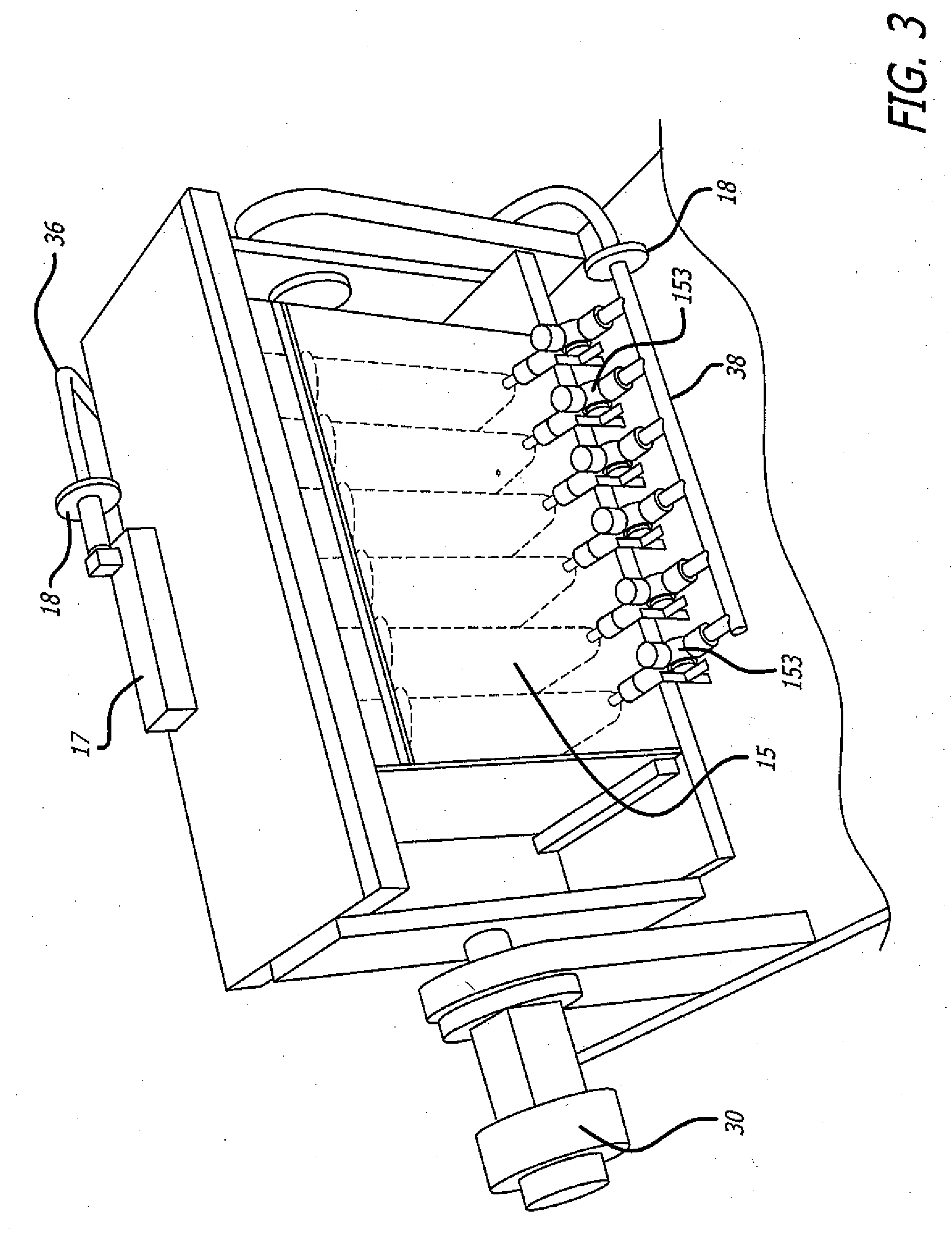Novel enhanced processes for drug testing and screening using human tissue
a technology of enhanced processes and human tissue, applied in the field of new enhanced processes for drug testing and screening using human tissue, can solve the problems of large development costs, inability to manage the same way, and the current regimen has two major failures
- Summary
- Abstract
- Description
- Claims
- Application Information
AI Technical Summary
Benefits of technology
Problems solved by technology
Method used
Image
Examples
example 1
[0071] In an embodiment, a doctor may use the teachings of the present disclosure to determine the optimum concentrations of a chemotherapy drug cocktail for a cancer patient. The doctor takes a biopsy of a cancerous tissue from the patient and divides the tissue sample into aliquots. The doctor divides aliquots into two groups. The doctor uses the first group to determine the most effective drug cocktail for the patient in question. The doctor then uses the second group of aliquots to determine the optimal concentration of the drug cocktail.
[0072] With the first group of aliquots, the doctor uses the group to determine the most effective drug cocktail. Tissue aliquots are cultured as described previously. Various drug cocktails are administered to the tissue aliquot. The percent of apoptosis of the cancerous tissue in the aliquots is measured by methods that would be common to a person of ordinary skill in the art. The doctor then selects the drug cocktail inducing the greatest de...
example 2
[0075] In another embodiment, the teachings of the present disclosure may be used to predict the toxicity of compounds to healthy tissue. Such results would be useful in data generated and submitted to the FDA pursuant to approval of a new drug application or abbreviated new drug application. An animal or human tissue sample is obtained by taking a biopsy or as part of surgery. Usually two species of animals, one rodent and one non-rodent are used because a drug may affect one species differently than another. Other organs likewise provide key data and are useful within the scope of the present disclosure. In another embodiment, the tissue is taken as part from a deceased organ donor, cloned, regenerated or otherwise supplied by techniques known to those skilled in the art ranging from cord blood to stem cells by somatic cell transfer, among other things.
[0076] Tissue aliquots are derived from the tissue sample and cultured as previously described. Once the tissue is cultured, a co...
example 3
[0077] Similarly, disease studies may be performed by using various compounds in the study of a disease. For example, inhibitors and stimulators of compounds in the tissues may be used to study their effects on chemical pathways in the tissue. Moreover, compounds may be applied to the tissue in an effort to observe their effects on the tissue level as opposed to the cellular level or organism level. The present disclosure provides the methods to use a bioartificial organ system; experimental parameters would be readily apparent to a person of ordinary skill in the art without the need for undue experimentation.
[0078] The testing may be performed by an independent third party in order to rule out any appearance of bias. Every effort is made to ensure that as few animals as possible are used as a source of tissue samples, and that they are treated humanely. Alternately, the present disclosure also contemplates the use of human tissues, samples of which may be obtained from organ dono...
PUM
 Login to View More
Login to View More Abstract
Description
Claims
Application Information
 Login to View More
Login to View More - R&D
- Intellectual Property
- Life Sciences
- Materials
- Tech Scout
- Unparalleled Data Quality
- Higher Quality Content
- 60% Fewer Hallucinations
Browse by: Latest US Patents, China's latest patents, Technical Efficacy Thesaurus, Application Domain, Technology Topic, Popular Technical Reports.
© 2025 PatSnap. All rights reserved.Legal|Privacy policy|Modern Slavery Act Transparency Statement|Sitemap|About US| Contact US: help@patsnap.com



